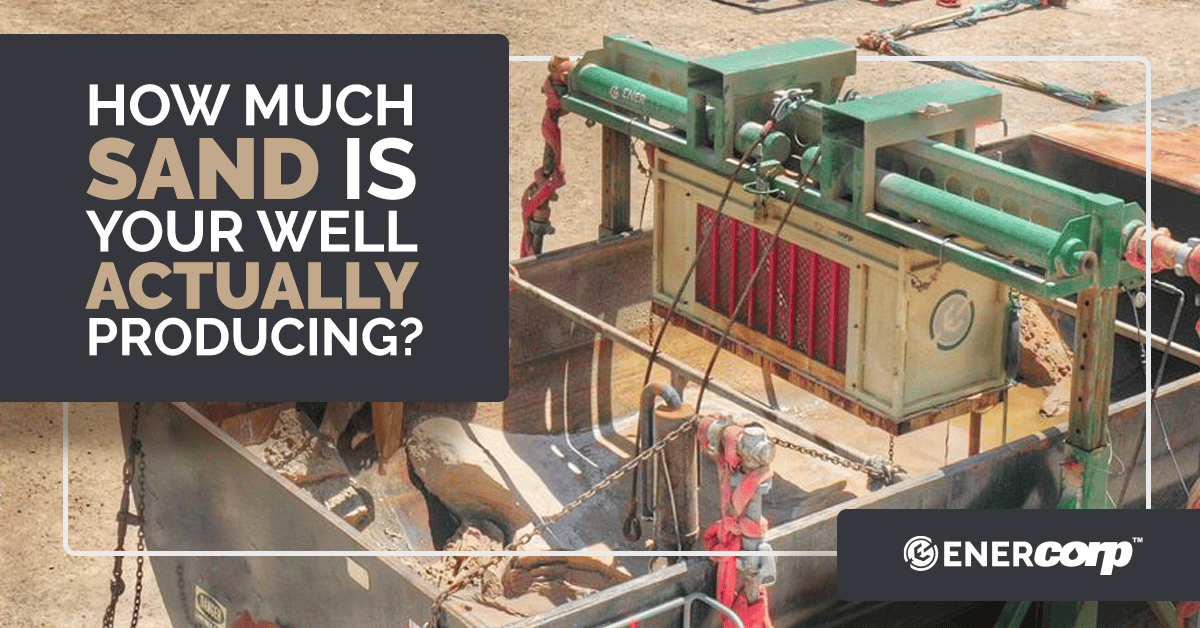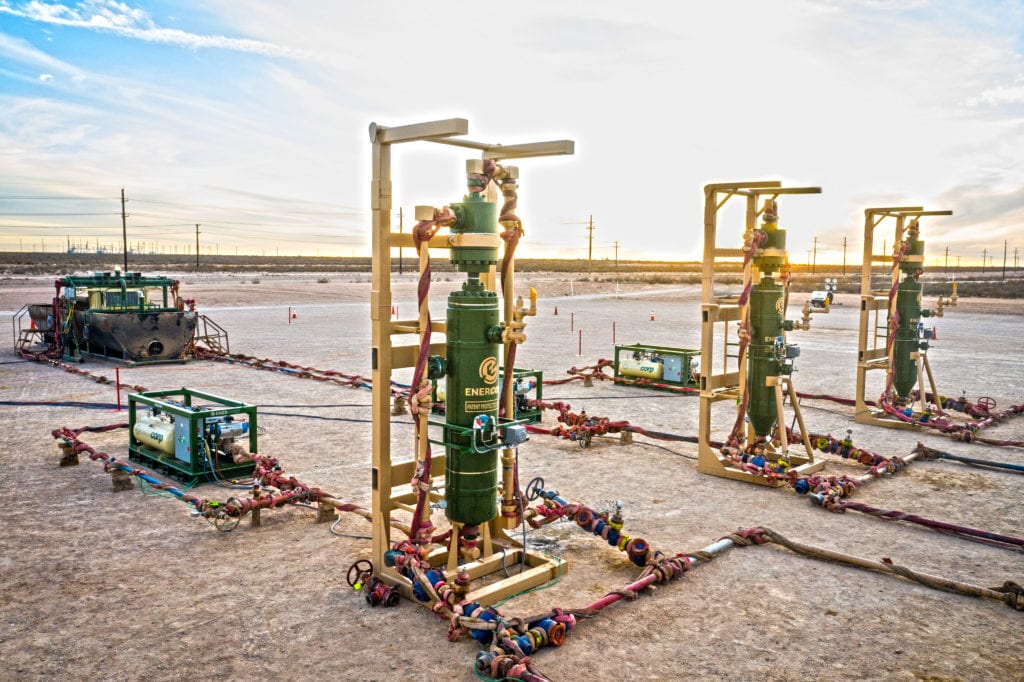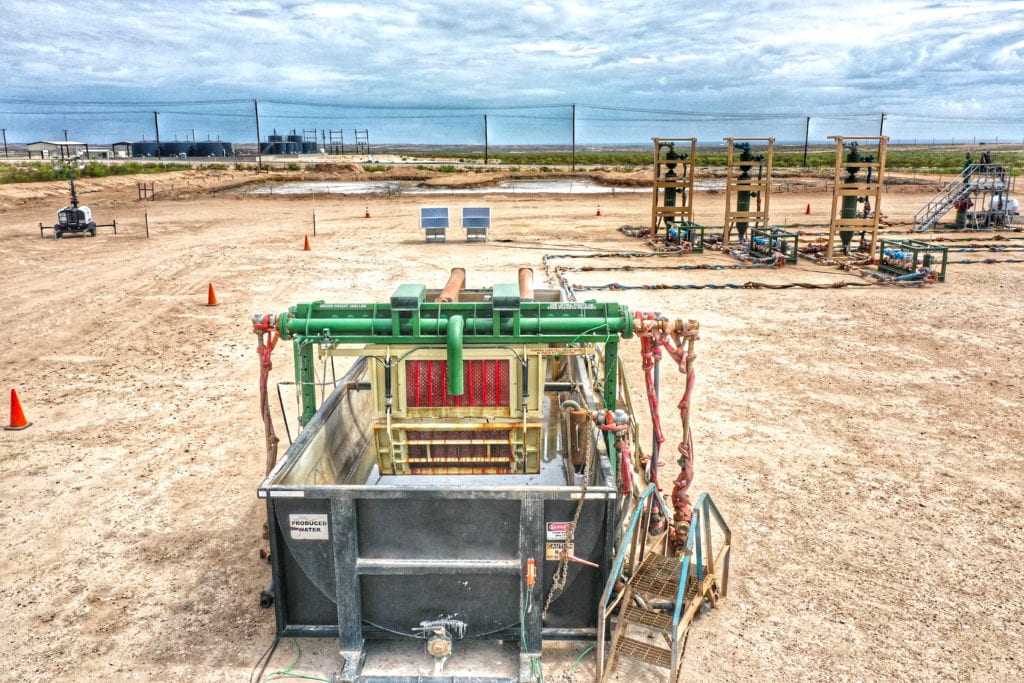
Do you know how much sand your well is actually producing?
Estimated reading time: 5 minutes
Table of contents
Have you ever asked someone for a recipe for a meal you really enjoy, only to be told to put in a palmful of this and a pinch of that
maybe a few shakes of this and however much you feel of that? Not having exact measurements can sometimes work wonders in the kitchen — especially when the cook knows what they are doing — but the same cannot be said for the oil and gas industry.
During the flowback process, many sand management service providers offer estimated sand quantification results to operators. Light, medium, and heavy are not exact quantification units and can vary greatly from service provider to service provider, so it is impossible for operators to really know how much sand they are actually dealing with.
Whether we’re working with operators in the Permian, Marcellus, Haynesville, or Eagle Ford, EnerCorp uses industry-leading digital transformation and automation technology to measure sand with a high degree of accuracy — enabling our customers to make better decisions for flowback.
Traditional sand quantification leaves organizations open to risks
In the oil and gas industry, most desanding or flowback service providers quantify sand into just three categories: light, medium, or heavy. They get these measurements — if that’s what we can call them — by feeling or listening to the sand as it goes through the choke. However, one of the major problems with this approach is that the sound of sand varies greatly depending on how open or closed the choke is. As a result, the light, medium, and heavy measurements can be wildly inaccurate.
One sand management service provider may categorize a heavy sand quantity as medium while another may register it as light. What does this mean for the operator?
Schedule delays:
The inaccurate estimation of sand can result in the flowback process taking much longer than it is supposed to. If the operator thinks they have a “heavy” quantity of sand coming through, they may decide to hold/pause the choke schedule.
Was the sand rate actually heavy enough to require a choke hold? At what sand rate can the choke schedule resume? These are difficult questions to answer without proper quantification. With real numbers, operators can work off of more concrete metrics to decide when holding or bumping choke size is required.
Operational issues:
The terms light, medium, and heavy are limitless. When operators use actual numbers and limits on choke decisions, this allows them to hold or even choke back if the sand rates get too high to a point where they may cause damage to the reservoir.
Financial burden:
Inaccurate results always lead to higher costs, as flowback and desanding equipment is required to be on site for longer than planned. In addition to the equipment costs, there is also the cost of personnel that are required to be on site.
If sand management equipment is released too early because of inaccurate sand rates, significant damage to downstream equipment is possible.
Health and safety risks:
Measuring sand manually is risky business for workers in the field, and can result in injuries and accidents if they are not careful.
Automated sand management with eFlowback is the answer
Not only has EnerCorp enabled the use of automated and exact sand quantification, we have automated the entire flowback and sand management process. eFlowback combines industry-leading sand separation with automation, measurement systems, and cloud-based software, giving operators the ability to autonomously control the entire flowback site.
The Sahara Advanced Cyclone
EnerCorp’s Sahara Advanced Cyclone is an innovative sand separator that offers consistent field performance of 97% or higher sand capture efficiency. The ability to remove more sand from the production stream than any sand cyclone on the market enables operators to bypass frac tanks and flow production directly to the facility. Plus — it provides the basis for highly accurate sand quantification.

Sand Quantification Unit
The eFlowback sand management ecosystem comprises a number of technologies that work together to provide operators with better flowback results. An important part of eFlowback is the Sand Quantification Unit, which makes measuring the weight of sand an exact science — unlike in traditional flowback. With exact sand quantities in hand, not just arbitrary light, medium, or heavy metrics, operators can better understand their reservoir behavior and plan the rest of their flowback operation.

How EnerCorp provides exact sand quantification results
The sand quantification unit provides precise weight measurements for sand, reducing the number of blowdowns and giving operators more insight into the performance of their well.
Measurement by the pound:
With eFlowback, operators can have exact measurements for sand captured by the pound, no longer needing to rely on light, medium, and heavy measures as many of our competitors provide.
Additional performance parameters:
We collect sand quantification data along other metrics, such as oil, water, gas rates, pressures, choke positions, and more. Why? This enables EnerCorp and our customers to make better decisions by observing trends over time. For example, we can see how the choke schedule affects sand production. This enables operators to optimize their flowback.
Fully automated operations:
We use a mechanized sand quantification unit to accurately measure large quantities of sand, and operators can manage it autonomously from a remote location. Only minimal personnel are required on site, reducing the chances of any HSE risks.
Analytical insights:
EnerCorp logs and stores all data in our Sandman database, giving us the ability to review trends and learn from similar jobs from multiple customers and geographic locations, well times, and other criteria. This large dataset provides better insight for making data-driven, future-looking decisions.
Don’t settle for an inaccurate estimate when you can have exact results
Instead of relying on the traditional method of listening to sand, get measurements that are accurate by the pound. This way, operators have the ability to carefully plan the next steps of their flowback, reduce extra financial costs, and prioritize personnel safety.
EnerCorp not only automates the measurement of sand during flowback, but digitally transforms the entire flowback process with eFlowback. Learn more about what eFlowback can do for your sand management needs by contacting EnerCorp today.
Share this Article
